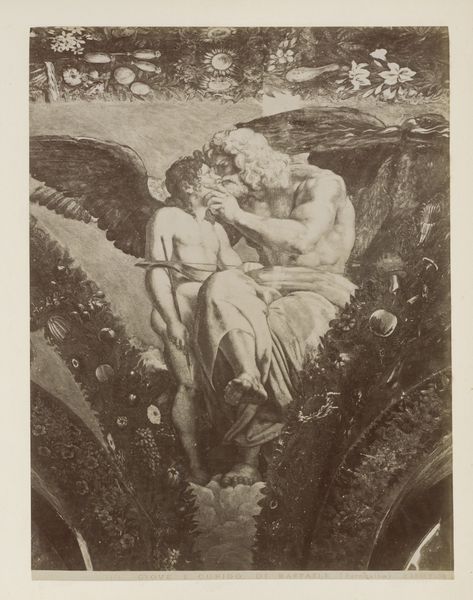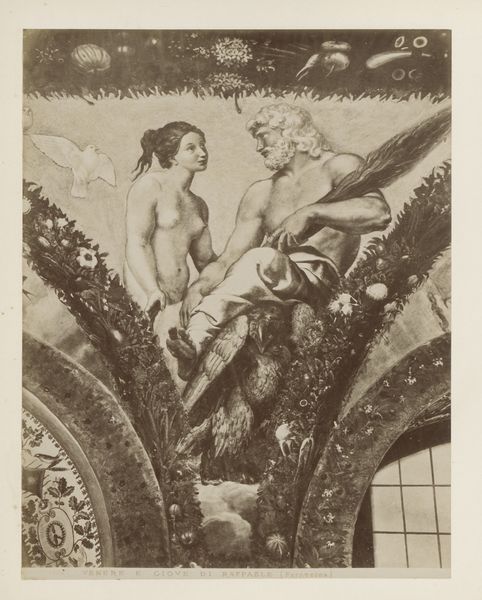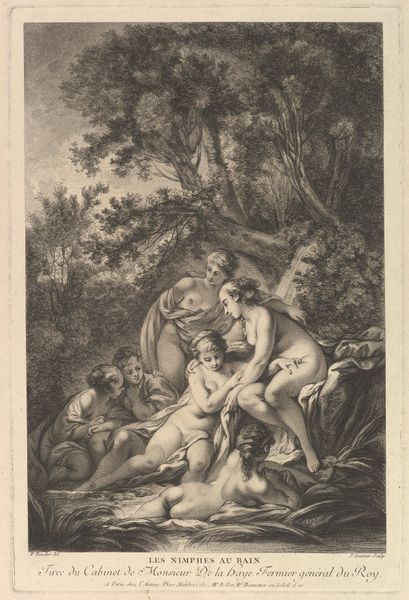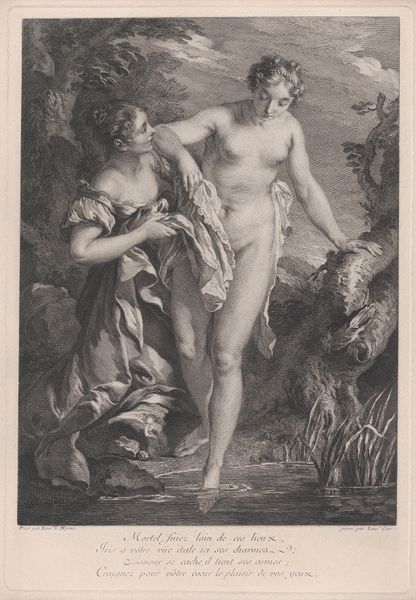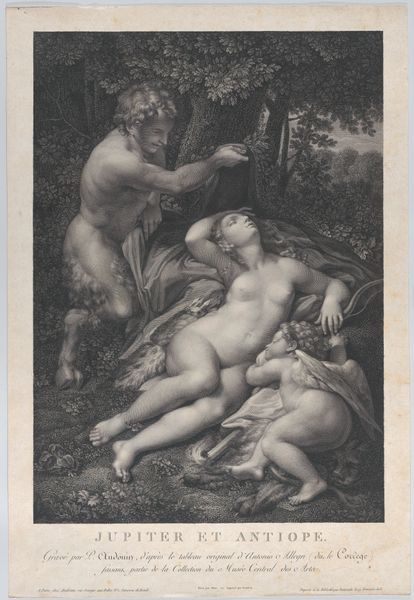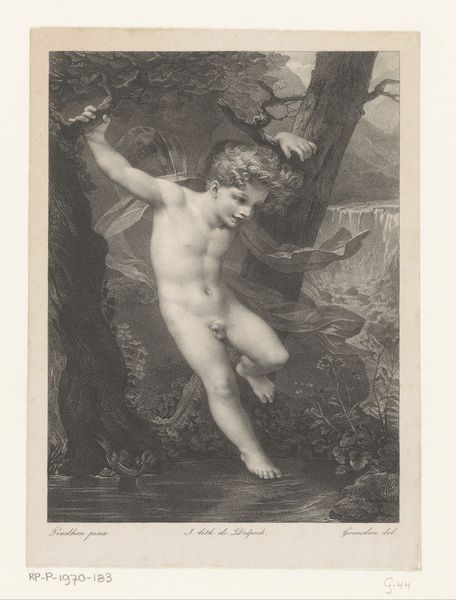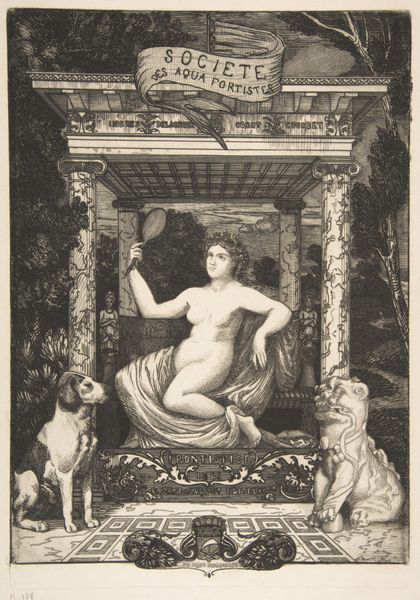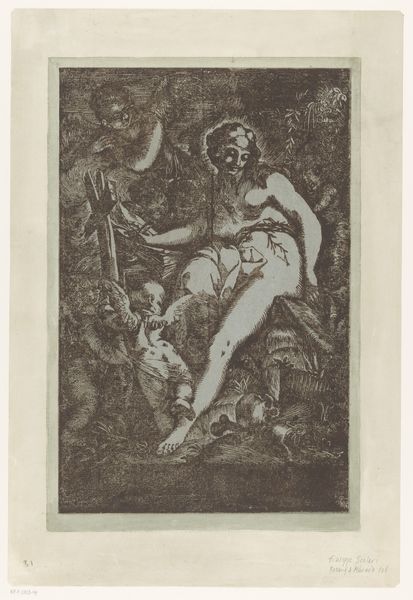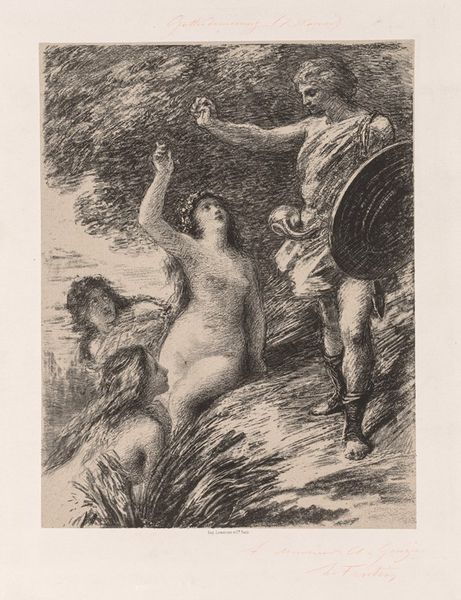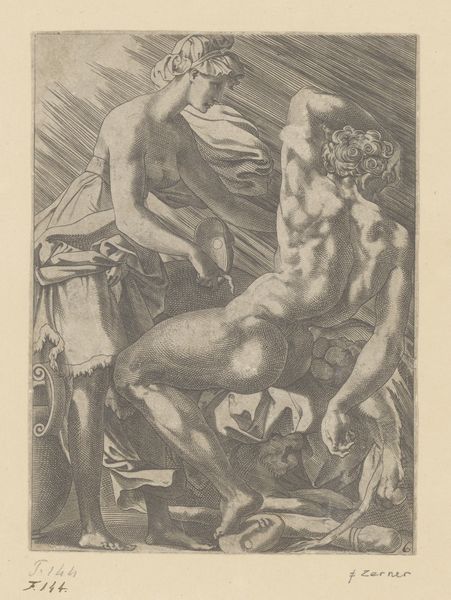
Fotoreproductie van fresco Venus, Ceres en Juno door Rafaël in het Farnesina te Rome c. 1870 - 1890
0:00
0:00
print, fresco, photography, gelatin-silver-print
#
portrait
#
allegory
# print
#
figuration
#
fresco
#
photography
#
gelatin-silver-print
#
surrealism
#
history-painting
#
academic-art
#
italian-renaissance
Dimensions: height 258 mm, width 201 mm
Copyright: Rijks Museum: Open Domain
Curator: This gelatin silver print, dating from around 1870 to 1890, captures a fresco by Raphael in the Villa Farnesina, Rome. It's entitled "Fotoreproductie van fresco Venus, Ceres en Juno door Rafaël in het Farnesina te Rome," and the photographer is Domenico Anderson. Editor: Oh, what a gorgeous tableau! They seem caught in a moment of relaxed debate, maybe goddesses exchanging gossip. It’s incredibly soft, almost dreamlike. Is that intentional with the medium, this photographic interpretation? Curator: Very likely so. Photography, then and now, mediated understandings of High Renaissance masters. Anderson's photo offered wider accessibility to artworks, previously only experienced by elites on the Grand Tour. It served a crucial educational role through widespread image circulation. Editor: It gives such presence, even in grayscale. Venus especially strikes me - this beautiful curve of her body is incredible. Do you think this distribution flattens and disseminates art in good faith, though? Is it divorced from the culture from which it was conceived? Curator: That's a tightrope, indeed. Reproductions democratized access, fueling artistic studies, however simultaneously transforming these religious works into marketable commodities and stripped from their sacred locations. Editor: Yes, precisely that push-pull. How Italian Renaissance of you! To hold the divine, literally muralled and sealed within a space and only viewable under strict condition to a widely disseminated, democratized commodity. It’s interesting how that narrative can inform so much even now. Curator: These reproductions really are complex historical actors. Now that you mention it, something similar unfolds across the rest of the exhibit; images travel, gaining and losing meanings across borders. Editor: Right! Every photograph in this exhibition really prompts consideration about who got to look at what and why and when. This piece really emphasizes the shifting terrain between high art and broader publics in that sense.
Comments
No comments
Be the first to comment and join the conversation on the ultimate creative platform.

